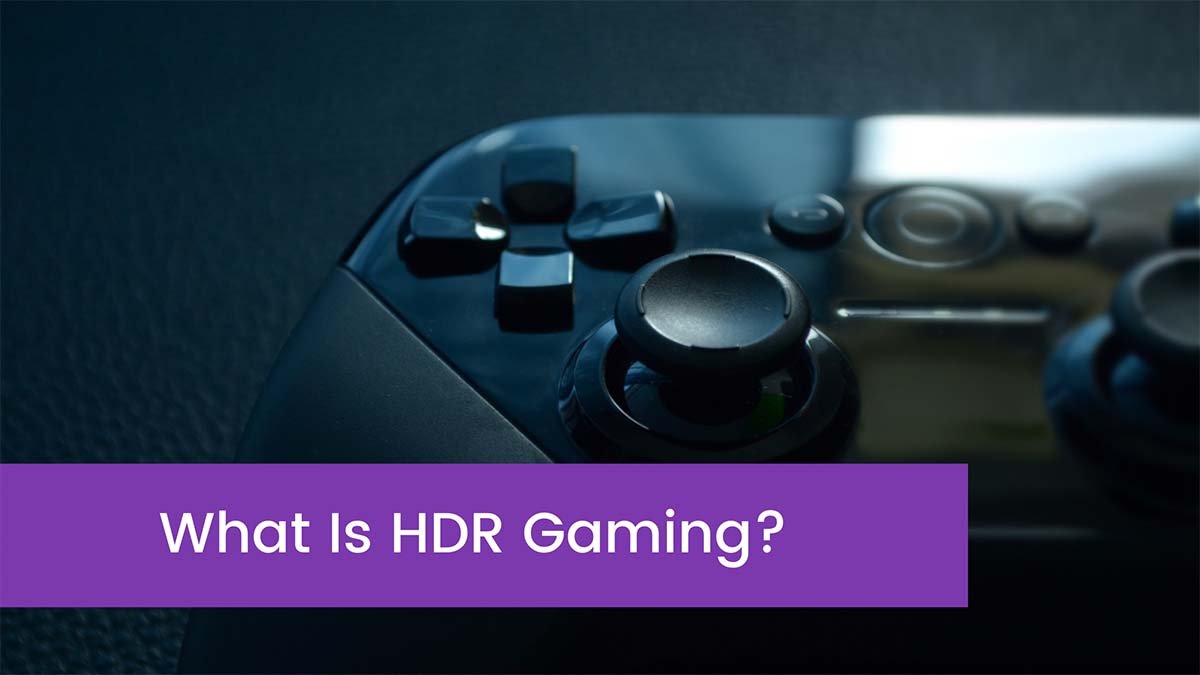High-Dynamic Range refers to a monitor’s capacity to display a broader range of contrast ratio and color than an SDR (Standard Dynamic Range) display (HDR). HDR display may produce deeper blacks and brighter colors, resulting in a more realistic image.
As you might assume, this necessitates a screen capable of displaying a more extensive range of brightness and color, where the HDR feature comes into play.
PC Gaming with High Dynamic Range(HDR)
While the majority of the HDR conversation is around televisions and console games, HDR is also becoming more prevalent in PC gaming. There are HDR gaming screens, and many games take advantage of the larger color spectrum that HDR provides.
Despite this, HDR isn’t widely used in PC gaming. What’s to stop you? This is partly because high-end HDR isn’t always compatible with LCD screens designed for more excellent refresh rates and faster response times. It’s not a characteristic that many “fast” gaming displays have.
There are, however, options if you want a gaming monitor that supports HDR.
To use HDR on your PC, you’ll need not only a display that supports it but also a GPU capable of rendering the game with the additional color and brightness information, much as on television.
Which GPUs support HDR? The good news is that practically all recent gaming GPUs are capable of doing so. You should be able to enjoy HDR on your gaming PC as long as you have a compatible display and install your operating system correctly.
Brightness and color
Rapidly discussing the color spectrum might be difficult. It’s vital to remember that the broader the color spectrum, the more accurate the presented image’s color.
Wide Color Gamut (WCG) is used in HDR, implying the display can show more colors. Consider the following scenario: an onscreen plant. WCG will expand your color palette and allow you to view more of the natural world via your display.
Even though HDR displays do not display as many colors as the human eye can see, they are significant enhancements over SDR displays (standard dynamic range).
The brightness or luminescence of a display is measured in candela per square meter. A display’s brightness is governed by its ability to produce more nits, also known as nits. The number of nits determines the brightness of a scene. The contrast ratio is affected by the display’s brightness (or how many colors it can produce).
Thus we can say that a display with a brightness of 400 nits cannot get as bright as a panel with 1000 nits. It also has a smaller contrast range to pick.
In explaining the HDR format, an HDR display is frequently used to refer to the brightness of a monitor.
A display that supports HDR 400, for example, has a maximum peak brightness of 400 nits. HDR 1000 displays are brighter, resulting in a broader contrast spectrum and, presumably, a more accurate comparison.
Formats in HDR Gaming
HDR, unlike resolution or refresh rate, refers to a spectrum rather than a numerical value. As a result, HDR isn’t standardized, and the results may vary depending on the display maker.
When compared to SDR, HDR always refers to a broader range of contrast ratio and color, but the actual capacity can vary.
There are various HDR formats to choose from, but here is a handful of the most common:
HDR10
Because HDR10 is an open-source standard with no licensing constraints, it is the most extensively used HDR format. Because of its widespread adoption, HDR10 has become the de facto HDR standard.
HDR10+
HDR10+ is a newer version of the HDR10 standard that adds dynamic information and a wider color and contrast spectrum. Compared to HDR10’s standard metadata, dynamic metadata provides richer color information and supports up to 4,000 nits brightness levels.
Dolby Vision
Dolby Vision is a high-dynamic-range (HDR) standard developed by Dolby Laboratories. Because it is more expensive to utilize and usually demands a higher-end panel, it is less popular than HDR10.
Dolby Vision offers up to 10,000 nits of brightness, significantly more than most televisions or monitors on the market today. However, Dolby Vision is still supported by many streaming services and corporations, and some screens support both HDR10 and Dolby Vision.
Each of these standards (and other, less common HDR standards like HLG) has advantages and disadvantages, although they are all a significant improvement over SDR. Consider whatever version of HDR the display utilizes and whether it meets your expectations when purchasing an HDR display.
What are the benefits of High Dynamic Range (HDR) in gaming?
If video games are excessively dark, the player may be unable to see the game’s obstacles. This can be aggravating. The gamer can see more of what is going on on the screen thanks to HDR technology.
HDR is especially critical for things on the screen that move quickly. The contrast between lights and darks is increased in HDR, making it more straightforward to notice objects.
HDR also provides the image with a broader color spectrum. On the screen, it can provide more realistic colors. On the screen, there is a more realistic sense of depth.
What are the disadvantages of playing HDR games?
Unlike typical pixel art and graphics, the colors in HDR images aren’t chosen with a specific purpose in mind. Colors for a scenario could be picked at random, which makes this form of play challenging.
When there is a lot of bright and dark contrast in the same place, HDR graphics can strain the eyes.
Conclusion
If we conclude this article, we can say that a panel’s peak brightness is critical to HDR quality, especially while gaming. HDR is the single most crucial concept to grasp. HDR can significantly impact image quality, and it’s usually more noticeable than other image metrics like resolution. HDR will remain the industry standard for display technology, with color accuracy and contrast ratio spectrums projected to improve as HDR becomes more widely adopted.




